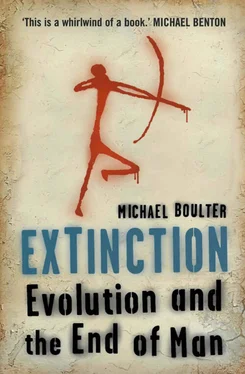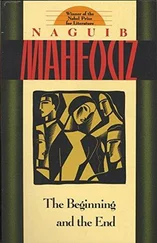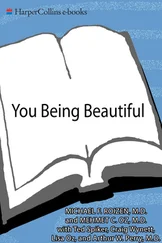Over the last forty years specialists from different parts of the natural sciences have come together to paint pictures of how the world looked millions of years ago. Their reconstructions are opening up new issues about climate change, plant migration, evolution, ecology and the statistics of populations. Now that we are taking these previously separate disciplines together, we can begin to see how they affect the urgent new environmental issues facing our modern world. My own studies have strayed into many other different methodologies, genetics, geology, ecology, taxonomy and even statistics. So now I call myself an evolutionary biologist rather than the paleontologist that I once was.
Since those exploratory days of the 1960s the scientific literature has been filled with detail about these biological and environmental changes. As the first half of the twentieth century was for theoretical and descriptive biology, so the second half accumulated large amounts of data about the evolutionary relationships between species and the environment. A climax was reached in 1977 when Fred Sanger learnt how to sequence the gene leading to genetic engineering. Two decades later DNA sequencing is being done automatically. Now the results create huge new databases each day, like new rows of books on shelves a kilometre long. Environmental ecologists and taxonomists are part of this new age of very large data recovery, and are beginning to seek automatic techniques to find, store and analyse the data. But there’s so much becoming available that it’s hard to manage at an international level.
One of the achievements of my research group at the University of East London is that we can analyse large databases interactively across the internet. This means we are able to assemble ideas and information from different sources, from which we can begin to see life on our planet as a complex system. Maybe we can understand how it survives and changes as a whole, for only then can the problems raised around the Taipei tea table be understood and tackled. We are just beginning to make a start to link the bits together.
Throughout my career I have been privileged to see many more of these bits from the whole of science than most people. At University College London during the early 1960s my degree course included lectures by Francis Crick and Sydney Brenner just when they were cracking the triplet genetic code. This was also when J. B. S. Haldane, the pioneer of an earlier revolution in genetics, was to be seen walking through the North Cloisters with a pillow stuffed up his jumper to comfort his cancer. The mathematics of mutation and the recombinations in dominant and recessive gene characters were the centre of his kind of biology: it is hardly heard of today. From this cusp between the old and the new I wandered with chemistry and geology, got stuck in thermodynamics, and touched on the philosophy of science. The more adventurous natural scientists were looking outwards from the strict demarcations of individual disciplines. J. Z. Young was busy changing the way anatomists think and Peter Medawar was breaking thoughts about immunology and the way science works. Karl Popper was down the road and the Beatles slept on the floor next door in my student residence.
All these different perceptions of life were being assembled together in the same place at the same time, squeezing out traditions from separate backgrounds into one amorphous shape. At least it seemed to be amorphous then, hard to put into any clear context or application. They were years of joy for the fearless intellectuals of science. Now, just forty years on, the shape has a much clearer identity, itself being replaced by a fresh wave of integration with new objectivity. Studies of organismal biology had peaked by the 1960s. The principles of structure and function which gave names to ‘genes’ suddenly led into the language of the triplet code in molecular genetics.
I was helped by my tutor, Bill Chaloner, a luminary in paleontology with a gift for communicating the fascinations of evolutionary processes. Those critical studies led into more defined ideas on how landscapes and ecologies change through different timescalcs. We were fired by the enthusiasms of the new wave to link all these traditions by looking at an issue from several different perspectives. They were exciting times because you could feel attitudes changing. That’s happening again, now, at the beginning of the new century. But this time the changes are going to be very big indeed and are beginning to affect our lives.
These experiences have influenced me to give a broad mind to an argument, often at the risk of being called ‘ecumenical’. In retrospect I see that’s how I reacted to the many factors relevant to environmental and evolutionary biology, genetics, geology, ecology and mathematics. They are all working together, constituting a complex system on our planet that can be traced back to the extinction of the dinosaurs and beyond. For most of the incidents that are thought to have changed that system there are a number of opposing theories. For example, to explain the sudden demise of so many large groups of animals 65 million years ago, there are at least four different ideas. First, a meteorite hit the Earth causing a 20km crater just off the Mexican coast and worldwide fires that killed big animals. Second, there was severe volcanic activity in India. Third, there were continuing physiological difficulties controlling body temperature. Finally, all the food ran out and the dinosaurs starved to death.
The different theories are a good example of how science works, with argument and limited facts to test the more fanciful solutions being offered. What holds good as an answer today is more than likely to be different from what was understood yesterday, and it will differ again tomorrow. But trends and patterns do emerge, and we are beginning to see things more clearly with more data from different disciplines. The growth of computing power and the introduction of the internet have been vital factors in making these leaps in understanding possible.
On the other hand, these are frightening times. On New Year’s Day 2000 the World Wildlife Fund and the Guardian newspaper published a booklet entitled A New Century a New Resolution. In it, the then chief scientific adviser to the UK government, Sir Robert May, issued a warning about ‘our greatest challenge’. In his view, this was to ‘ensure that any increase in global productivity is achieved in a sustainable and environmentally friendly way. We really do live at a special time in the history of Life on Earth. A time when human activities have come to rival the scale and scope of the natural processes which built, and which maintain, the biosphere.’ If we take action now, he argued, we can avert a catastrophe.
I take a more pessimistic view. In this book I present evidence to show that that catastrophe has been well under way for many thousands of years, and that Bob May’s observations of what we are doing to the environment now amount to just a final nail in the coffin. Most people think of time only in terms of their own lifelong experience of it, or a few hundred years more, at best. But if you extend your thoughts of time back further, past the last millennium into the first, and think of what the world might have been like, things look quite different from today. Now compare our present world with what it looked like before humans started to interfere, a few thousand years ago, and there are more changes still. The evidence of what early human hunters did to other large mammals shows enormous horror, resulting in the extinction of a number of species. It has all happened since the end of the last full glaciation, 10,000 years ago. That’s a period of time few of us are ever asked to consider. So when I’m asked to say how long it will be before the forthcoming extinctions, I say: ‘Soon, but remember, I’m a paleontologist.’
Читать дальше











